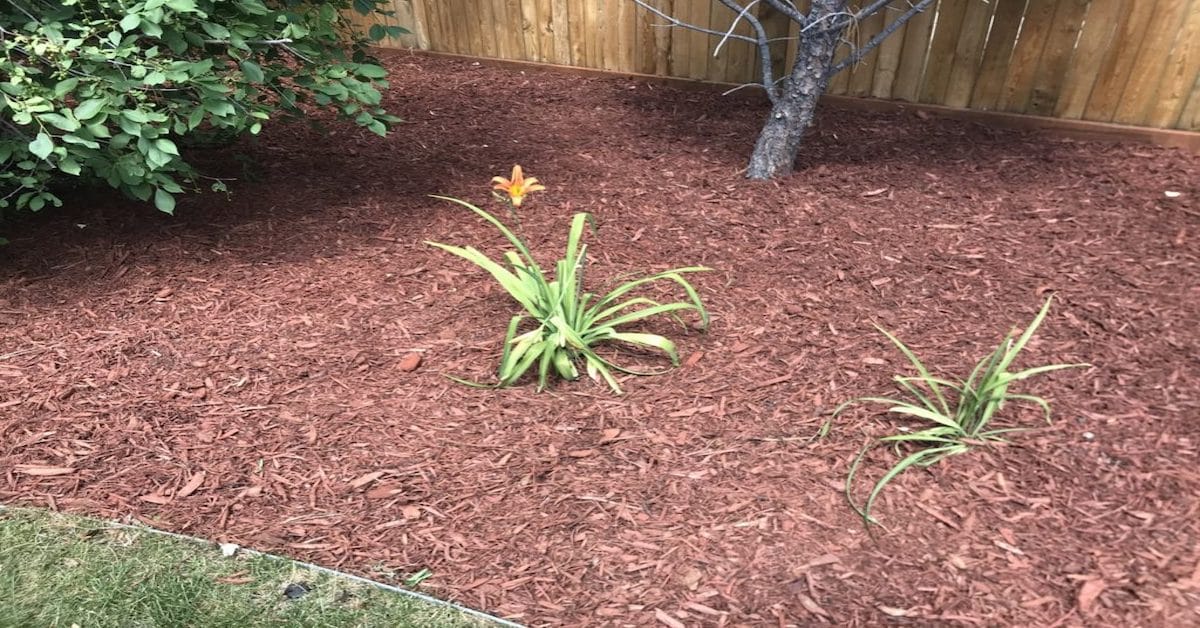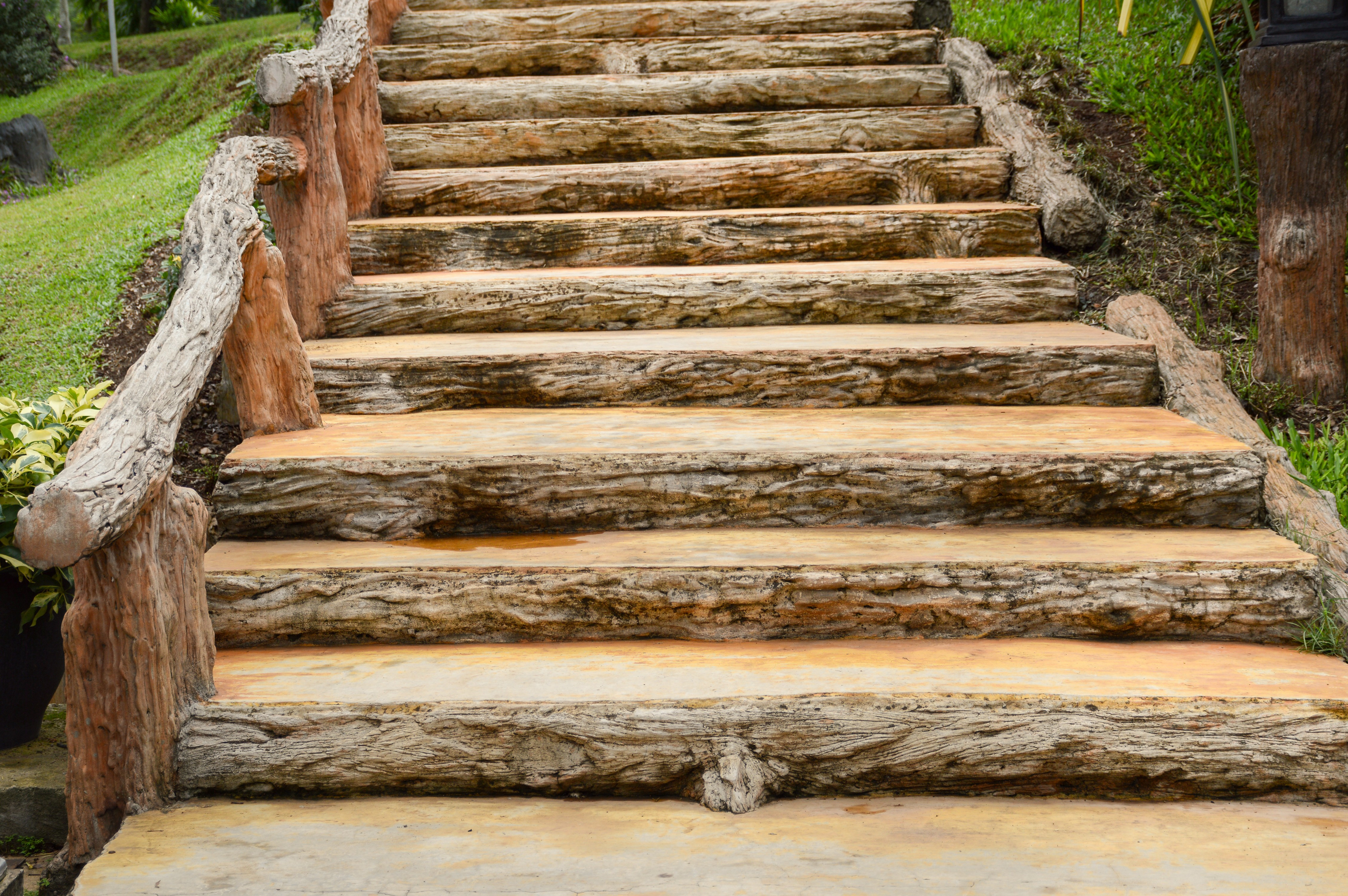Home>Garden Design>Landscape Design>How To Lay Landscaping Bricks


Landscape Design
How To Lay Landscaping Bricks
Modified: January 22, 2024
Learn how to lay landscaping bricks and create stunning landscape designs with our step-by-step guide. Enhance the beauty of your outdoor space with professional landscape design techniques.
(Many of the links in this article redirect to a specific reviewed product. Your purchase of these products through affiliate links helps to generate commission for Chicagolandgardening.com, at no extra cost. Learn more)
Table of Contents
Introduction
Welcome to our comprehensive guide on how to lay landscaping bricks. If you’re looking to add a touch of elegance and functionality to your outdoor space, landscaping bricks are a fantastic option. They can be used for a variety of purposes such as creating pathways, edging flower beds, or even constructing retaining walls.
Landscaping with bricks offers a wide range of benefits. Not only do they enhance the overall aesthetic appeal of your outdoor area, but they also provide durability and ease of maintenance. Additionally, laying landscaping bricks can be a fulfilling DIY project that allows you to unleash your creativity.
In this article, we will take you through a step-by-step process on how to lay landscaping bricks like a pro. We’ll cover everything from planning and preparation to the finishing touches, ensuring that you have all the necessary knowledge to achieve stunning results.
Whether you’re a beginner or an experienced DIY enthusiast, this guide will equip you with the essential skills and techniques required to successfully lay landscaping bricks. So, let’s dive in and transform your outdoor space into a stunning oasis!
Step 1: Planning and Preparation
Before you start laying landscaping bricks, it’s crucial to spend some time planning and preparing the area. This step sets the foundation for a successful project and ensures that your vision becomes a reality.
First, determine the purpose of your project. Are you creating a pathway, a patio, or an edging for flower beds? Understanding the intended use of the landscaping bricks will help you determine the quantity of bricks you’ll need and the overall design you want to achieve.
Next, measure the area where you plan to lay the bricks. Use a tape measure or a string to mark the boundaries accurately. This will give you an idea of how many bricks you’ll need for your project. Additionally, consider the depth at which you’ll install the bricks. For pathways, a depth of about 4-6 inches is typically suitable.
After measuring the area, sketch out a rough design or layout plan. This will help you visualize the placement of the bricks and identify any potential obstacles or challenges. Consider factors such as curves, angles, and any existing landscape features you need to work around. This planning stage allows you to make adjustments and ensure a cohesive and aesthetically pleasing design.
Once you have a clear plan in mind, it’s time to gather your materials. In addition to the landscaping bricks, you’ll need tools such as a shovel, a wheelbarrow, a tamper, a level, and a masonry saw for cutting bricks (if necessary). It’s also a good idea to have safety equipment such as gloves and safety goggles to protect yourself during the project.
Before beginning the installation, it’s essential to prepare the ground. Start by removing any existing grass, weeds, or debris from the area. Use a shovel or a sod cutter to create a clean and level surface. If necessary, consider adding a weed barrier fabric to prevent the growth of weeds.
Lastly, check the local building codes and regulations for any specific requirements or permits related to laying landscaping bricks. It’s important to ensure compliance with these guidelines before proceeding with the project.
By investing time in thorough planning and preparation, you set yourself up for a smooth and successful brick-laying process. This step helps you estimate materials, visualize the design, and create a solid foundation for your landscaping project.
Step 2: Marking the Area
Once you have completed the planning and preparation stage, it’s time to mark the area where you will be laying the landscaping bricks. Marking the area ensures that you have a clear guideline to follow and helps maintain alignment and accuracy throughout the installation process.
To start, use your measuring tape or a string to measure and mark the boundaries of the area where the bricks will be laid. Drive stakes into the ground at each corner and tie a string tightly between them. This will create a straight and level guideline for your brick installation.
If you are creating a curved pathway or edging, consider using a hose or a flexible marking tool to shape the desired curve. Lay the hose or marking tool along the intended curve, adjusting it until you are satisfied with the shape. Trace along the hose or marking tool with a can of spray paint to mark the curved line.
Next, mark any additional features or elements within the area, such as flower beds or other landscape features. This will help you ensure that the bricks are laid in a way that integrates seamlessly with the existing design. Use a chalk line or additional string to mark these features.
Once the area is marked, take a moment to step back and review the layout. Visualize how the bricks will be placed and how they will interact with the surrounding landscape. This will help you make any necessary adjustments or refinements to the layout before proceeding.
Properly marking the area sets the stage for precise brick installation and ensures a cohesive and visually pleasing result. It helps you maintain the desired shape, alignment, and flow of the landscaping bricks, resulting in a professional-looking finish.
Step 3: Excavating the Site
With the area properly marked, it’s time to move on to the excavation phase. Excavating the site is an important step in laying landscaping bricks as it provides a stable base for the bricks and ensures long-term durability.
Begin by using a shovel or a garden spade to remove the top layer of grass, weeds, or any other vegetation within the marked area. Dig down to a depth of about 4-6 inches, depending on the desired thickness of your base and the height of the bricks you are using.
As you excavate, it’s important to keep the excavation area level. Use a level or a straight board to check the evenness of the ground. This ensures that the bricks will be laid on a stable and even surface.
Remove any rocks, roots, or debris that you come across during the excavation process. These can interfere with the proper installation of the landscaping bricks and affect the overall stability.
After the excavation is complete, it’s time to create a solid base for the bricks. Start by adding a layer of gravel or crushed stone to the excavated area. This layer acts as a drainage medium and provides stability to the bricks. Use a rake or a shovel to spread the gravel evenly across the excavated surface.
Once the gravel is spread, use a tamper or a hand compactor to firmly compact the base. This step is crucial to ensure that the base is solid and will not shift or settle over time.
Finally, use the level and the straight board to check the evenness of the compacted base. Make any necessary adjustments by adding or removing gravel until you achieve a level and stable surface.
Excavating the site provides a solid foundation for the landscaping bricks. It allows for proper drainage, stability, and ensures longevity for your project. Take the time to excavate thoroughly and create a solid base to set yourself up for a successful brick installation.
Step 4: Installing the Base
With the site excavated, it’s time to move on to the next step: installing the base for your landscaping bricks. The base provides a stable and level surface for the bricks, ensuring that they remain in place and maintain their integrity over time.
Start by adding a layer of coarse sand or leveling sand on top of the compacted gravel base. This layer of sand acts as a cushion and allows for minor adjustments in the height and position of the bricks. Use a rake or a shovel to spread the sand evenly across the surface.
Once the sand is spread, use a screed board or a straight board that spans across the area to create a level surface. Drag the board over the sand in a back-and-forth motion, removing excess sand and filling in any low spots. Check periodically with a level to ensure that the surface is even.
To further compact the sand and ensure its stability, use a plate compactor or a hand tamper to go over the area. This helps settle the sand and creates a solid and stable base for the landscaping bricks.
After compacting the sand, take a moment to recheck the levelness of the base. Make any necessary adjustments by adding or removing sand until you achieve a level surface.
Once the base is properly installed and leveled, you can proceed to lay the landscaping bricks. A solid and level base is essential for the proper installation and alignment of the bricks, ensuring that they remain stable and level over time.
Installing the base is a crucial step in the process of laying landscaping bricks. By taking the time to properly prepare and level the base, you set yourself up for a successful installation and create a foundation that will withstand the test of time.
Step 5: Setting the Bricks
With the base properly installed, it’s time to move on to the exciting part – setting the landscaping bricks. This step involves placing the bricks in the desired pattern and securing them in place.
Start by positioning the first brick at one corner of the project area, aligning it with the marked guidelines. Ensure that the brick is level by using a level and make any necessary adjustments by adding or removing sand underneath. Once the first brick is in place, continue setting the remaining bricks, following the marked guidelines.
As you set each brick, make sure they are tightly placed together with minimal gaps. This will help create a seamless and uniform look. Use a rubber mallet to tap the bricks into place, ensuring they are securely set in the sand.
Periodically check the level of the bricks and adjust as needed to maintain a consistent and level surface. Use a string line or a long straight board to ensure the bricks are aligned in a straight and even row.
If you are creating a curved pathway or edging, be mindful of the shape as you lay the bricks. Make gentle adjustments to the position of each brick to maintain the desired curve. This may require cutting some bricks to fit the curve.
Continue setting the bricks until the entire project area is covered. Take breaks as needed to step back and assess the overall layout, ensuring everything looks visually pleasing and in line with your design plan.
Once all the bricks are in place, gently sweep fine sand over the surface, filling the gaps between the bricks. Use a broom or a brush to ensure the sand settles into the crevices. This sand acts as a stabilizer and helps lock the bricks in place, preventing shifting and weed growth.
Finally, use the tamper or compactor to compact the bricks and the sand between them. This will create a more solid and stable surface.
Setting the bricks requires attention to detail and careful positioning. By following the marked guidelines and ensuring the bricks are tightly set and evenly aligned, you create a visually pleasing and structurally sound landscaping feature.
Step 6: Cutting Bricks (if necessary)
In some cases, you may need to cut landscaping bricks to fit specific areas or create intricate designs. Step 6 focuses on the process of cutting bricks to ensure a seamless and professional-looking installation.
Start by identifying the areas where you need to make cuts. This could be for fitting bricks at the ends of a row, around obstacles such as trees or flower beds, or for creating curved edges. Measure the dimensions carefully and mark the bricks where the cuts need to be made.
There are several tools you can use to cut bricks, such as a masonry saw, a chisel, or a brick splitter. The tool you choose will depend on the complexity of the cuts and the availability of equipment.
If using a masonry saw, be sure to follow the manufacturer’s instructions for safe operation. Position the brick securely on the saw’s cutting surface and slowly guide it through, applying even pressure. Take breaks as needed to ensure the saw does not overheat.
If using a chisel and hammer, score the brick along the marked line and then gently tap along the score line with the hammer until the brick breaks along the desired cut. This method requires precision and careful control to avoid damaging the brick.
A brick splitter is another option for cutting bricks. This tool works by applying pressure on the brick to split it along the desired line. Follow the instructions provided with the brick splitter to ensure safe and accurate cutting.
Once the bricks are cut, test their fit in the designated areas. Make any necessary adjustments to achieve a snug and proper fit. Remember to take into account the recommended gap between bricks for sand filling.
After the cut bricks have been properly fitted, continue with the installation process, setting them in place and ensuring they align with the surrounding bricks. Take the time to check the levelness and alignment of the cut bricks to maintain consistency throughout the project.
By cutting bricks as needed, you can achieve a seamless and professional-looking installation. Properly fitted and aligned cut bricks enhance the overall aesthetics and functionality of your landscaping project.
Step 7: Edging and Finishing Touches
Once the landscaping bricks are set in place, it’s time to add the finishing touches that will complete the project and give it a polished look. Step 7 focuses on edging and other final details to enhance the overall aesthetic appeal.
Start by edging the perimeter of your brick installation. This can be done by using brick pavers, metal or plastic edging, or even natural materials like stones or rocks. Edging adds definition and prevents the bricks from shifting or spreading over time.
Place the edging material along the outer borders of the brickwork, making sure it is firmly pressed against the bricks and embedded into the ground. This will provide a clean and professional edge to your landscaping project.
Next, sweep fine sand over the entire brick surface, ensuring that all gaps between the bricks are filled. Use a broom or a brush to distribute the sand evenly and into all crevices. This sand acts as a stabilizer, locking the bricks in place and preventing weed growth.
After spreading the sand, use a compactor or tamper to firmly compact the bricks and the sand between them. This helps to set the bricks in place and creates a more solid and stable surface.
Once the bricks are compacted, use a hose or a watering can to lightly wet the surface. This will activate and settle the sand, further enhancing the stability of the brickwork.
Finally, take a step back and inspect the overall project. Look for any loose or uneven bricks, and make the necessary adjustments or corrections. Take the time to ensure that everything is level, aligned, and visually pleasing.
To add an extra touch of elegance, consider incorporating landscaping elements such as plants, flowers, or decorative rocks around the brickwork. This will enhance the overall appeal of your outdoor space and create a harmonious and inviting atmosphere.
By focusing on edging and the final details, you elevate the visual impact and longevity of your landscaping brick installation. The finishing touches bring the project together, transforming it into a stunning outdoor feature.
Conclusion
Congratulations! You have successfully completed the process of laying landscaping bricks. By following the steps outlined in this guide, you have transformed your outdoor space into a beautiful and functional area. Whether you’ve created a pathway, patio, or edging, your landscaping project is sure to enhance the overall aesthetics and usability of your property.
Remember, proper planning and preparation are the keys to a successful brick installation. Taking the time to measure, mark the area, and gather the necessary materials and tools ensures a smooth and efficient process. Excavating the site and installing a solid base provide stability and longevity for your brickwork.
Setting the bricks and making any necessary cuts ensures a precise and visually pleasing design. Pay attention to the levelness and alignment of the bricks as you lay them, as this will greatly impact the overall look and functionality of the project.
Finally, don’t forget the importance of the finishing touches. Edging the perimeter and filling the gaps with sand creates a clean, stable, and professional appearance. Consider adding additional landscaping elements such as plants or decorative rocks to elevate the overall aesthetic appeal even further.
We hope this guide has provided you with the knowledge and confidence to tackle your landscaping brick project. By applying the techniques outlined here, you can create a stunning outdoor space that you can enjoy for years to come. So, roll up your sleeves, gather your materials, and let your creativity flow. Get ready to transform your outdoor space with the beauty and functionality of landscaping bricks!










